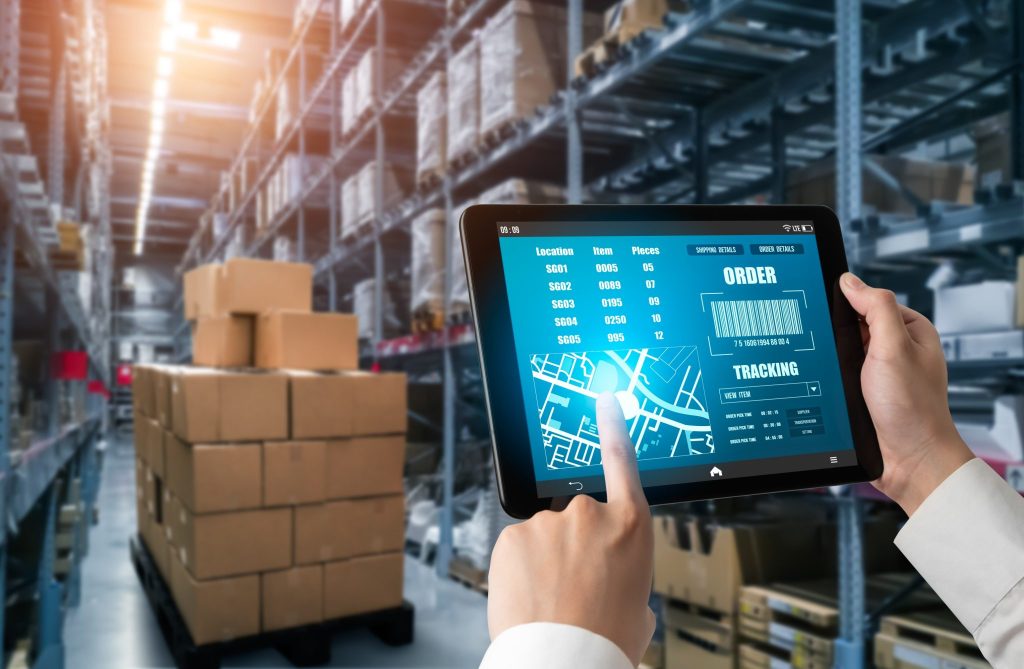Introduction
The global supply chain crisis has been one of the defining features of the post-pandemic economic landscape. It has disrupted industries, delayed deliveries, and increased the costs of goods worldwide, leaving businesses and consumers grappling with inflationary pressures and uncertainty. As nations strive for recovery in the wake of the COVID-19 pandemic, the global supply chain remains one of the most significant obstacles to economic revival. But when will the supply chain crisis ease? And what are the underlying obstacles to a sustainable global economic recovery?
In this article, we will examine the key factors contributing to the global supply chain disruptions, assess when they might begin to stabilize, and explore the biggest economic barriers to sustained recovery. We will also delve into how governments, businesses, and consumers are adapting to these challenges and what the future holds for global trade.
1. Understanding the Global Supply Chain Crisis
The global supply chain is a vast network of producers, suppliers, manufacturers, transporters, and retailers that work together to bring products from raw materials to end consumers. The COVID-19 pandemic disrupted almost every aspect of this network, leading to a cascade of issues that continue to reverberate across global markets.
Key Factors Contributing to the Crisis
- Pandemic-Related Shutdowns: When the COVID-19 pandemic first struck in early 2020, lockdowns, factory closures, and workforce reductions caused massive disruptions to production and logistics networks. Factories in China, which produce a significant portion of the world’s manufactured goods, were particularly hard-hit, affecting the supply of essential materials like electronics, chemicals, and textiles.
- Shipping Bottlenecks: The pandemic created severe delays in the shipping industry. Global shipping containers became stuck in ports due to labor shortages, quarantine protocols, and a lack of available trucks and ships. This resulted in longer lead times, delays in product delivery, and a shortage of containers, which caused shipping prices to skyrocket.
- Labor Shortages: Labor shortages have been a persistent issue, exacerbated by the pandemic. In industries like manufacturing, transportation, and logistics, companies have struggled to hire and retain workers. Government support programs, health concerns, and changing work preferences have all contributed to workforce disruptions in key sectors.
- Rising Commodity Prices: The supply chain crisis has been compounded by rising prices for raw materials and energy. Supply shortages for critical commodities such as semiconductors, metals, and fuel have led to price hikes, further inflating costs and contributing to global inflation.
- Geopolitical Tensions: Trade wars, such as those between the U.S. and China, and regional conflicts like the war in Ukraine, have further strained supply chains. These tensions disrupt trade routes, create uncertainty, and hinder the smooth flow of goods across borders.
2. When Will the Global Supply Chain Crisis Ease?
The question on many people’s minds is when will the supply chain crisis end? While there is no single definitive answer, several key trends can help forecast the timeline for improvement.
a. Gradual Normalization in 2023-2024
Experts generally believe that the worst of the supply chain crisis has passed, but full recovery will take time. Some estimates suggest that we may not see a complete normalization of global supply chains until 2023 or 2024. However, the timing varies depending on the region, sector, and specific supply chain challenges.
- Manufacturing Recovery: Manufacturing is expected to return to pre-pandemic levels by the end of 2023 as factories ramp up production and address backlogs. In industries such as automotive, which were severely impacted by semiconductor shortages, recovery may take longer. The introduction of new chip manufacturing plants, particularly in the U.S. and Europe, could help alleviate these shortages by 2024.
- Shipping and Logistics: The shipping industry is slowly returning to normal, with congestion in major ports such as Los Angeles and Long Beach beginning to ease. However, some experts argue that it may take several more months to clear the backlog of ships, with some logistical disruptions continuing into 2024. Increased investment in port infrastructure and new technologies like blockchain-based tracking systems may expedite this process.
- Labor Market Adjustments: Labor shortages in key sectors are expected to continue into 2023, particularly in the transportation and logistics industries. As economies stabilize and unemployment rates continue to fall, the labor market is likely to improve, but it may take time to restore full workforce participation.
b. Long-Term Structural Changes in Supply Chains
While the immediate disruptions caused by the pandemic may ease, the global supply chain is undergoing longer-term transformations that may shape its future dynamics.
- Regionalization of Supply Chains: One notable trend that has emerged from the crisis is the move towards regionalization of supply chains. Companies are increasingly looking to reduce their dependence on distant suppliers, particularly in China, and bring production closer to home. This shift could reduce the impact of global disruptions but might result in higher manufacturing costs due to labor and materials being more expensive in certain regions.
- Technological Advancements: Automation, artificial intelligence (AI), and supply chain management technologies are likely to play a pivotal role in smoothing supply chain inefficiencies. As businesses invest in smart logistics solutions, digital inventory management, and predictive analytics, the supply chain will become more resilient to future shocks.
- Diversification of Suppliers: To mitigate risks, companies are diversifying their suppliers, moving away from single-source suppliers to multiple sources in different geographical regions. This approach, though more complex to manage, will help create more resilient supply chains that are less vulnerable to disruptions in any one area.
3. What Is the Biggest Obstacle to Economic Recovery?
While the global supply chain crisis is a major hurdle, there are several other factors that are complicating economic recovery efforts. These factors create a web of challenges for businesses, governments, and consumers.
a. Inflation and Rising Costs
One of the most immediate and visible consequences of supply chain disruptions is the rise in inflation. The scarcity of goods and raw materials, coupled with soaring energy prices, has led to higher costs for consumers and businesses alike.
- Consumer Price Inflation: Prices for goods such as food, electronics, and household products have increased sharply, putting pressure on household budgets. The rising cost of living is especially pronounced in developed economies, where wages have not kept pace with inflation.
- Input Cost Inflation: Businesses, particularly small and medium-sized enterprises (SMEs), are facing steep increases in the cost of raw materials, components, and energy. These rising input costs reduce profit margins and create difficulties in pricing and forecasting, leading to further uncertainty.

b. Labor Market Imbalances
Labor shortages remain a significant impediment to economic recovery, especially in the manufacturing, logistics, healthcare, and service sectors. Despite high demand for workers, many industries are struggling to fill vacancies.
- Mismatch of Skills: In some sectors, there is a mismatch between the skills required by employers and the skills available in the workforce. The digital economy, for example, requires workers with expertise in artificial intelligence, cybersecurity, and data analysis, areas where skill gaps remain.
- Worker Preferences: Many workers are rethinking their career choices in light of the pandemic, opting for remote work or different industries. The resulting shifts in worker preferences have created imbalances in labor supply and demand, with some sectors facing severe talent shortages.
- Wage Pressures: The ongoing labor shortages in certain sectors are putting upward pressure on wages, contributing to higher operational costs for businesses. While wage increases are beneficial to workers, they can make it more difficult for businesses to maintain profitability, particularly in industries with thin margins.
c. Geopolitical and Political Instability
Geopolitical instability continues to undermine global economic confidence, creating uncertainty for businesses and investors. The Russia-Ukraine war has been a significant example, with far-reaching consequences for global energy markets, food supply chains, and international trade. Similarly, U.S.-China tensions over trade, technology, and national security remain unresolved, complicating efforts to restore global economic stability.
- Energy Prices and Supply: The war in Ukraine has disrupted energy supplies to Europe and other parts of the world, leading to soaring oil and gas prices. These price hikes have affected both consumers and businesses, contributing to inflation and economic stagnation.
- Trade Barriers and Protectionism: Protectionist policies and trade barriers have intensified, particularly in the wake of the pandemic. These measures create obstacles to global trade and investment flows, further hindering recovery efforts. Increased tariffs and restrictions on critical goods, such as semiconductor chips, continue to pose challenges for industries reliant on global supply chains.
d. Monetary Policy and Debt Levels
Central banks around the world have responded to the economic disruptions caused by the pandemic with expansionary monetary policies, including low interest rates and large-scale asset purchases. However, these policies have created challenges of their own.
- Interest Rate Hikes: To counter rising inflation, central banks are now shifting towards tightening monetary policy, which includes raising interest rates. While necessary to combat inflation, these measures can slow down economic growth by increasing borrowing costs for businesses and consumers.
- Debt Levels: Governments worldwide have accumulated high levels of debt to finance stimulus packages and recovery measures. While necessary during the pandemic, these debt levels pose long-term risks to economic stability. As interest rates rise, servicing this debt will become more expensive, further constraining fiscal policy options.
4. Conclusion
The global supply chain crisis is a complex and multifaceted issue that continues to affect economies around the world. While there are signs of gradual improvement, full recovery will take time, and several structural changes are likely to reshape global trade in the years ahead. The biggest obstacles to economic recovery are inflation, labor shortages, geopolitical instability, and rising debt levels, which together create a challenging environment for businesses and policymakers.
The path to economic recovery will require a combination of policy interventions, technological advancements, and global cooperation. Governments and businesses must adapt to the evolving landscape, investing in resilient supply chains, worker training, and sustainable economic practices. While the road ahead is uncertain, proactive strategies can help mitigate the risks and unlock new opportunities for growth in the post-pandemic world.
















































